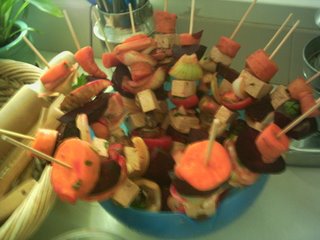
Heyya, folks, gather round and I’ll give you a lecture that has as much to do with sociology (one of my other loves) as it does about food.
How can you tell if one is sick or healthy? With many physical diseases, it’s not a difficult task. If one coughs, sneezes and feels awful – they have a cold or a flu. Things get somewhat trickier in the world of mental illnesses. Sure, popular culture is saturated with examples of extreme psychoses, but less serious patterns – neuroses and disorders – raise a lot of issues. And like many other things, defining a certain set of behaviors as an illness is very much a matter of politics.
Mental disorders appear in a special guide called the DSM. The DSM lists a series of symptoms, and clinicians are supposed to see how many of them are manifested in the patient, in order to establish whether or not a disorder is present (here, take a look). Naturally, the disorders don’t just appear in the newest DSM edition by themselves; many professionals have to acknowledge them as such, and there is much controversy about which behaviors and phenomena are and are not included in it. For example, part of the struggle for gay rights recognition had to do with removing homosexuality from the list of disorders in the DSM.
Why am I telling you this? Because in recent years, some controversy has arisen over a certain set of behaviors, which some people would like to see defined as a disorder. They call it “Orthorexia”, which, in literal latin means “correct appetite”.
According to Steven Bratman, who coined the term “orthorexia” and wrote about it in his book, Health Food Junkies, the disorder consists of a pathological obsession with eating healthy food. For an orthorexic, adhering to rigid nutrition disciplines becomes the focus of life. Eating healthfully and “correctly” is seen as a moral, or even spiritual, virtue; the orthorexic might graudally limit his or her consumption of foods, trying to achieve a “purer” state of being. An orthorexic often feels superior to others who eat a less healthy diet. When “falling off the wagon” and eating something unhealthy, the orthorexic experiences a deep sense of guilt and engages in various health-rites of penance such as fasting.
Now, there’s no much sense in defining something as an illness if it doesn’t cause harm or suffering. Bratman argues that, in severe cases, an obsession with health food can lead to severe physical damage and even to death. However, even when things are less tragic, limiting oneself to what one deems to be extremely healthy food can seriously impair one’s life. People who are more attached to their eating regimes than to other aspects of their lives isolate themselves from friends (restrictive eating habits hinder going to lunch together, and so does consistent lecturing about food!), find it difficult to travel and eat out, and become, to a certain extent, slaves of their diet.
Others oppose the medicalization of health food obsession, for various reasons. One of them is that, in general, being a health nut causes no harm. There is no much cause for concern over someone who gets in nutrients, vitamins, minerals, and is interested in wholesome food; that would lead to stigmatizing half of the food blog community, for goodness sake! Cases in which people are taking upon themselves extreme and restrictive dietary regimes could merely be a manifestation of dogmatic, inflexible thinking patterns in general, and not merit a specific disorder title. Moreover, there is no much basis to distinguish between people whose healthy diet is an aspect of their worldview from folks whose dietary restrictions stem from religious decrees (such as kosher or halal diets). What makes one worldview pathological while the other isn’t?
Whether or not you think orthorexia should be medicalized, it’s probably a good opportunity to say here: all in moderation, folks. I’m the last person to recommend polished grains, white sugar and saturated fats, but hey, if you feel like having a good ice cream or a nice bit of delicious chocolate, and it doesn’t hurt you physically, go right ahead and enjoy it. Yes, we should take good care of our bodies, most of the time. Our bodies will reward us by bearing with the occasional treat we have.
To bring this balance to earth, I’ll finish with a short quasi-recipe: Oven fries. As good as, or even better than regular fries. Preheat your oven to 180 degrees celsius. Slice thinly some nice potatoes. Place them on an oiled piece of foil on a baking pan, and sprinkle whatever you like on top. In this house, it’s usually rosemary, garlic and chile peppers, but there’s endless possibilities. Stick in the hot oven for about 35-40 minutes, then munch to your heart’s content. Yeah, it’s carbs. Yeah, it’s not a nutritional powerhouse. But it’s fun. Enjoy.









